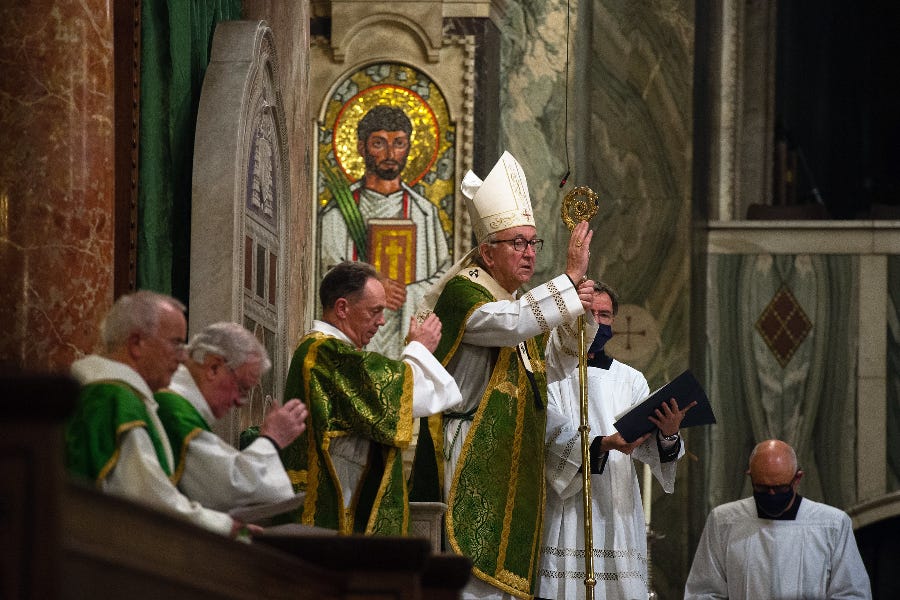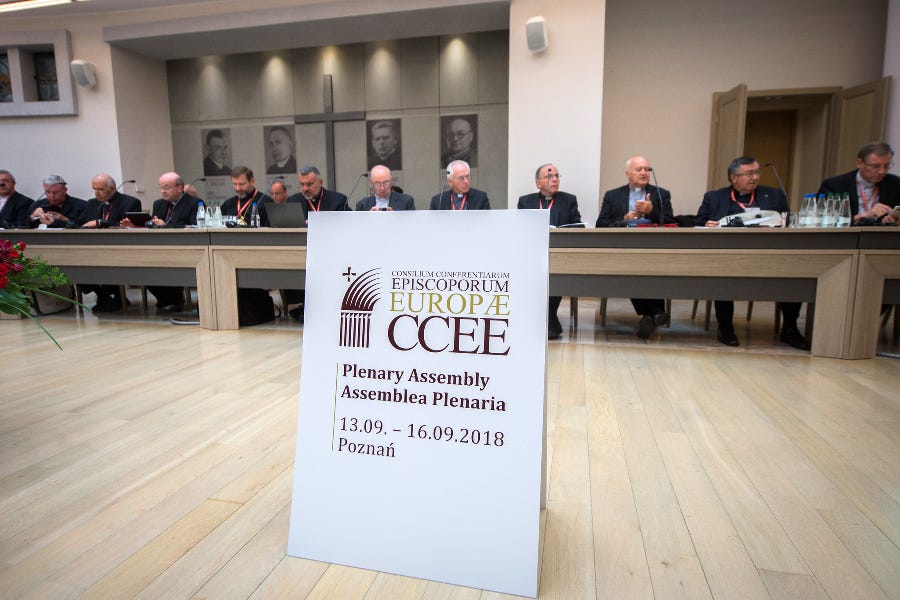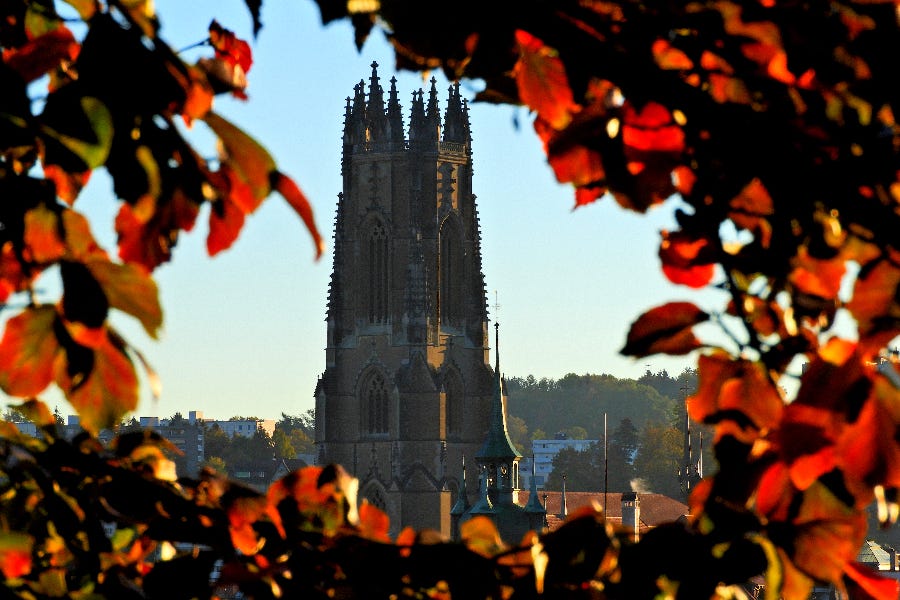

The Vatican on Friday will unveil plans for the second phase of the Church’s discernment process, leading to the 2023 synod on synodality in Rome.
The details will be presented at a press conference by Cardinal Mario Grech, Secretary General of the Synod of Bishops, and Cardinal Jean-Claude Hollerich, general rapporteur of next year’s gathering of the world’s bishops on the theme “For a Synodal Church: Communion, Participation, Mission.”
The two-year initiative is entering what the Vatican calls the “continental phase.” In the first stage - the diocesan phase - organizers were given the task of consulting as many Catholics as possible in a brief period at the tail end of a pandemic.
The second stage will present a different challenge: identifying concerns that are shared by Catholics living in vastly different national settings.
Synod organizers on the seven inhabited continents - North America, Latin America, Europe, Africa, the Middle East, Asia, and Oceania - may struggle to pick out themes that unite Catholics separated by borders, cultures, and vast distances.
In Europe, some observers believe that Church leaders overseeing the “continental phase” will find it hard to reconcile the contrasting priorities of Catholics living in the East and West of the continent.
How difficult will it be? The Pillar takes a look.

Europe’s East-West divide
Most people accept that Europe’s 44 countries can be divided into two broad categories: East and West.
That division is rooted in recent political history as much as it is in geography. Eastern countries are generally defined as those that belonged to the Communist Bloc. So someone living in Prague, capital of the former Czechoslovakia, might be called “Eastern European,” even though they live further west than a “Western European” resident of the Austrian capital Vienna.
The division of Europe into East and West is crude, but it is also useful because it highlights important differences between countries that experienced decades of communism and those where capitalism has held sway.
European Catholic communities that suffered under communism have evolved in different ways to those that passed through the 20th century without long-lasting state-sponsored persecution.
The divide between Catholics in Eastern and Western Europe can arguably be seen in responses to the German “synodal way.” The controversial initiative is expected to close next year with a call for radical changes to Church teaching, practice, and structures.
The Bosnian Cardinal Vinko Puljić said last year that the synodal way’s proposals were alien to Catholics who had survived communism.
“A Church that has weathered the challenge of communism does not have such exotic ideas. Indeed, such attitudes offend and astonish our believers,” he commented. “We cannot understand a Church in which sacrifice is a foreign word and there is a Jesus without a cross.”
In former communist Poland, the bishops’ conference president issued a strongly worded 3,000-word critique of the synodal way’s trajectory.
“Let us avoid the repetition of worn-out slogans, and standard demands such as the abolition of celibacy, the priesthood of women, Communion for the divorced, and the blessing of same-sex unions,” Archbishop Stanisław Gądecki wrote in February.
The Nordic bishops - representing Sweden, Denmark, Norway, Finland, and Iceland - have also voiced concern about the German process. But Church leaders in more populous Western European countries, such as the U.K., France, Italy, and Spain, have not made comparable official statements.
What do we know so far?
The Vatican asked the world’s bishops’ conferences to submit a document summarizing local synod discussions by Aug. 15. Several national episcopal conferences have missed that deadline.
Many Western European bishops’ conferences filed their submissions in time, including those in Belgium, England and Wales, France, Germany, Ireland, Italy, Scotland, and Switzerland. But several of Eastern European countries seem to have either overshot the deadline or submitted their reports to Rome without publicity.
At the time of writing, at least two former communist territories have published national synod syntheses - the Czech Republic and Lithuania - while many Polish dioceses have also issued reports.
Although there is a limited amount of material with which to make comparisons, the available texts do have a different feel to those of Western European countries.
Lithuania’s national synthesis, for example, begins with a reflection on faith. “While considering the various details of our Church life, we often forget the main condition - the need to constantly nurture our communio, our relationship with the Lord Jesus Christ,” it says.
It voices concern about a lack of true community in the Church and calls for priests to make greater efforts to work with lay people, while sympathizing with the clergy’s struggles with loneliness and high expectations.
It concludes by identifying five priorities: to foster relations between clergy and laity; to build an “open and responsible” community; to help people to grow and develop in the Church; to not alienate people; and to be fully committed to being a synodal Church.
Compare this with the Irish Church’s synthesis, which begins by describing the impact of clerical abuse. It then sets out the case for “co-responsible leadership,” saying: “Many people feel that decision-making and authority are exercised solely by priests and bishops. This power structure provokes discontent in them, frustration and anger with the processes of decision-making and exercise of authority at all levels in the Church.”
The Irish report notes that “there were calls from both young and older participants for optional celibacy, married priests, female priests, and the return of those who had left the priesthood to marry.”
It also emphasizes that “there was a clear, overwhelming call for the full inclusion of LGBTQI+ people in the Church.”
It’s tempting to conclude from this brief comparison that Eastern European submissions are concerned with matters of faith and community, while Western European ones are focused more on power structures and sexuality. But we would need to compare more documents to be able to assert this confidently.
Besides, concerns about the treatment of LGBT+ Catholics are not absent from diocesan stage reports in ex-communist countries.
The Polish Archdiocese of Poznań noted in its synthesis that “according to a significant group of synod participants, the Church’s attitude toward LGBT+ people is inadequate: ‘There is a lack of love of neighbor.’”
It observed that young people “expressed their pain at the tough and sometimes even aggressive language of some clergy and laity toward LGBT+ people,” although a “very small group” of participants expressed hope for a change in Church teaching.
It concluded: “The majority of synod participants who spoke out made it clear that a change in language and attitudes toward these people is needed: ‘We expect them to be treated with respect, compassion, and gentleness, just as the Catechism speaks of.’”
Beyond East and West
Europe’s diocesan synod reports suggest that it’s helpful to make other distinctions, too — beyond East and West.
There is also arguably a division between Catholics in northern and southern Europe. The German national synthesis report, for instance, has strikingly different concerns than that of Italy.
The German report concludes with this quotation:
“If they wish to restore trust in the Church, the bishops need to take up a clear position on the pressing issues of our time, such as equal access for all baptized people to church offices, a reassessment of sexual morality, and a non-discriminatory approach to homosexual and queer people.”
“Taking up a clear position also means speaking a language that people can understand and that does not hide behind convoluted wording. As regards the abuse scandals, there needs to be an unambiguous acceptance of responsibility; power needs to be taken under control, and an attempt made to make amends to the victims of sexual and spiritual abuse.”
The Italian report, meanwhile, makes only a glancing reference to “LGBT+ people with their parents” in a list of groups that are seeking greater inclusion in the Church.
It says that the local Church is too “priest-centric” and calls for a greater sharing of responsibilities between clergy and lay people. But it also notes that laity “are not exempt from the risk of developing forms of clericalism in the management of the small spaces of power entrusted to them.”
Moving beyond broad geographical distinctions, there are also cultural and linguistic divisions in the European Church.
The Swiss bishops’ conference noted in May that there were glaring differences within the Church in Switzerland itself. It contrasted the concerns of the country’s French and Italian speakers (sometimes called “Latins”) with those of German speakers.
“In the reflection on the quality of synodical work, the spiritual concerns of Latin Switzerland, focused more on attitude, were supplemented with the observations and advice of German-speaking Switzerland, which are more structure-oriented,” it said.
So we could compare the reports of “Latin” and “Germanic” countries, highlighting the “spiritual concerns” of the former and the latter’s emphasis on structural changes.
This might be a useful way of exploring the divisions within the European Church, but it also has its limitations. The national synthesis documents of France and Germany actually overlap at many points. Both are centered on the abuse crisis, governance issues, married priests, the role of women, divorce and remarriage, and homosexuality.
The various synod reports could also be sorted into those of “core” and “periphery” countries, with rich nations like France, Germany, and Austria on one side and poor ones such as Albania, Belarus, and Bosnia-Herzegovina on the other.
There are countless other ways to frame the divisions between European Catholics - which is not surprising when you consider that the continent has around 750 million inhabitants, about 200 languages, and some 160 distinct cultural groups.

A continent-sized challenge
Fortunately, the participants in Europe’s “continental phase” will not be asked to draw common themes out of the national synthesis documents.
They will focus instead on the first edition of the synod on synodality’s instrumentum laboris, or working document, which will be produced by the General Secretariat of the Synod of Bishops and based on all the whole world’s national synthesis documents.
According to the Vatican’s official handbook, each continent will produce a “final document,” inspired by the first instrumentum laboris, which will be used to draft a second working document for use at the bishops’ assembly in October 2023.
But as Europe’s Church leaders draft the final text, contrasting priorities will inevitably emerge. Will the document be able to reflect the desires of Western European Catholics without downplaying those of Eastern Europeans? Will it have a “Latin” or “Germanic” flavor? Will it lean towards the concerns of the core or the periphery?
According to the synod handbook, the group responsible for the continent-wide meeting will be the Council of European Bishops’ Conferences (CCEE). That’s a good sign because the CCEE is a truly representative organization. It has 39 members, including not only national bishops’ conferences but also lesser-known bodies such as the Eparchy of Mukachevo (in western Ukraine) and the Diocese of Chișinău (based in Moldova).
The CCEE’s president is the (U.S.-born) Lithuanian Archbishop Gintaras Grušas. Its vice presidents are the Serbian Bishop Ladislav Nemet and Luxembourg’s Cardinal Hollerich, who is also a pivotal figure in the synod on synodality’s third and final stage. So the CCEE’s leadership has a good balance between different geographical regions.
Will the “continental phase” result in a final document that equally delights French traditionalists, German synodal way participants, and Ukrainian Catholics living in bomb shelters?
That is probably impossible.
But it will be worth watching how the document’s drafters navigate the many fault lines of European Catholicism, and what viewpoints on the continent take centerstage.












Large swaths of the Catholic laity and clergy in countries like Ireland and Germany seem to consider it axiomatic that a Catholic Church that pivots to embracing women priests, married priests, same-sex marriage, contraception, abortion, etc. will regain its erstwhile relevance and popularity in their nations. There are a couple big problems with this. (1) Various protestant sects, including state churches in Scandinavia, have already adopted these liberal innovations, and no sort of renaissance followed. In fact, declines in participation accelerated. (2) Does not a Catholic Church that jettisons its unpopular but venerable positions run the risk of alienating its core group of faithful who still support those teachings? In other words, the disaffected won't come back, and the devout will feel betrayed and be tempted to leave too.
A striking fact of this pontificate, made all the more striking by the unprecedented creations of cardinals from far flung and marginalized parts of the world, is that Francis has not created cardinal a single diocesan bishop from Eastern Europe.
Konrad Krajewski, a Pole, and Michael Czerny, a Czech by birth, are curial officials.
I should be clear that I have no problems with Francis' diversifying the college of cardinals, in fact I quite support it. But it is a little interesting, one has to admit, that the church in eastern europe has been noticeably left out.